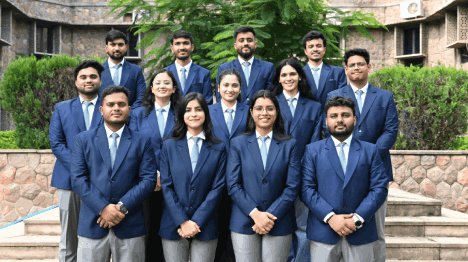- About Us
- Academics
Schools
Programs
General Information
- Faculty
The faculty members and researchers working at IIHMR University come from varied backgrounds including, but not limited to medicine, public health, management, economics, statistics, demography, human geography, social and behavioral sciences, rural development and pharmaceuticals.
- Admissions
- Research
.Publications & Journal
- Executive Education
Executive Programmes
- Online Certification Courses
ONLINE CERTIFICATION Courses
- Training
- Placements
- Fee Payment
- NAAC
- IQAC
- NIRF
- Webinars
- About Us
- About IIHMR University
- Board of Management
- Academic Council
- Board of Studies
- Research Board
- Institutional Review Board
- Finance & Audit Committee
- Departmental Research Committee
- Chairperson's Message
- President's Message
- IIHMR University Act
- Infrastructure
- Collaboration
- Ranking
- Board of Studies (School of Digital Health)
- Awards & Accolades
- Academics
- Institute of Health Management Research
- School of Pharmaceutical Management
- M. L. Mehta School of Development Studies
- School of Digital Health
- SD Gupta School of Public Health
- MBA (Hospital and Health Management)
- MBA (Pharmaceutical Management)
- MBA (Development Management)
- MBA (Healthcare Analytics)
- Master of Public Health
- Student Manual – Cohort 9 (2021-2023)
- Master of Public Health (Offered by Johns Hopkins Bloomberg School of Public Health, USA in cooperation with IIHMR University, Jaipur, India)
- Ph. D.
- MBA CSR & ESG Management (Executive)
- MBA Sustainable Business Management (Executive)
- Common Information for all the Programs
- Academic Calendar
- Student Handbook 2020-21
- Committees
- Policies
- Annual Exam Calendar
- Library
- Faculty
- Officers of University
- Dean of Institute of Health Management Research
- Dean of School of Pharmaceutical Management
- Dean of School of Development Studies
- Dean of SD Gupta School of Public Health
- Dean of School of Digital Health
- School of Digital Health
- Faculty List A to Z
- Faculty List Designation Wise
- Faculty List School Wise
- Admissions
- Research
- Executive Education
- Training
- Placements
- Alumni
- Events
- Job Openings
- Contact
- Research
Global Asthma Network (GAN) Study Prevalence of Asthma in India
Agency : Asthma Centre, Jaipur supported by CIPLA Foundation
The Global Asthma Network (GAN) was established in 2012 to identify and address the problem of asthma which is an important Non-Communicable Disease (NCD) globally. GAN evolved from the International Study of Asthma and Allergies in Childhood (ISAAC) and the International Union Against Tuberculosis and Lung Disease (The Union), two organizations dedicated to help countries identify and address this important NCD for more than two decades, and from the Global Asthma Report 2011.
The mission is to prevent asthma and improve asthma care globally, with a focus on low and middle-income countries. The network will achieve this through enhanced surveillance, research, capacity building, and access to effective asthma care including quality-assured essential medicines. The primary aim of the study was to obtain internationally comparable estimates of the prevalence of symptoms of asthma, rhinoconjunctivitis and eczema amongst school children in India and gain insight into the direction and magnitude of change in the prevalence of conditions. This study will also gave us an idea about current data on status of asthma management and environmental factors associated with asthma in our country
The Collaborating centres comprised of one Principal Investigator (PI) for children and one Principal Investigator for adults (parents of corresponding children). For the GAN-ISAAC India study of 2017-18; there were 9 collaborating centres across India namely: Jaipur, New Delhi, Kolkata, Kottayam, Lucknow, Pune, Chandigarh, Mysore and Bikaner.
The population of interest was school children in the age group of 6-7 years and 13-14 years and their parent(s) (both mother and father)/guardian(s) within a given geographical area. Sampling of each age group was done separately. For this study, 3,000 children from each age group and 6,000 parents/guardians were included from each centre. Thus, in total a sample size of 1,62,000 subjects were included (27,000 six to seven-year-old, 27,000 thirteen to fourteen-year-old and 1,08,000 parents/guardians).



